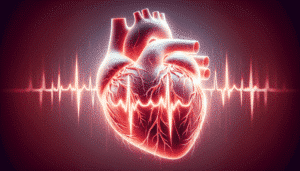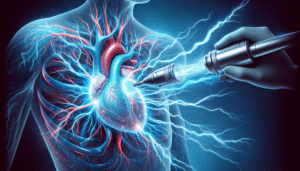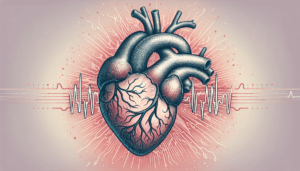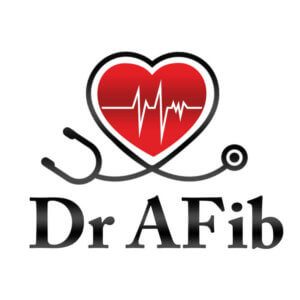Understanding digoxin side effects is vital for anyone taking this heart medication. Minor issues like nausea to serious cardiac concerns could arise. This article offers essential information on recognizing and managing these effects, equipping you with the knowledge to minimize risks and maintain your well-being while on digoxin.
Key Takeaways
- Digoxin is effective for treating heart conditions such as atrial fibrillation but can cause a range of side effects from gastrointestinal issues to serious cardiac events and long-term implications like electrolyte imbalances.
- Awareness of the signs of digoxin toxicity is crucial for early detection and prevention of severe complications. Symptoms include confusion, nausea, vision changes, and heart rate alterations, with toxicity being more likely in patients with renal insufficiency.
- Regular monitoring and management of drug interactions are key in the use of digoxin; patients must inform healthcare providers of all concurrent medications, and routine checks of serum digoxin levels and renal functions are recommended for safety and efficacy.
Understanding the Side Effects of Digoxin
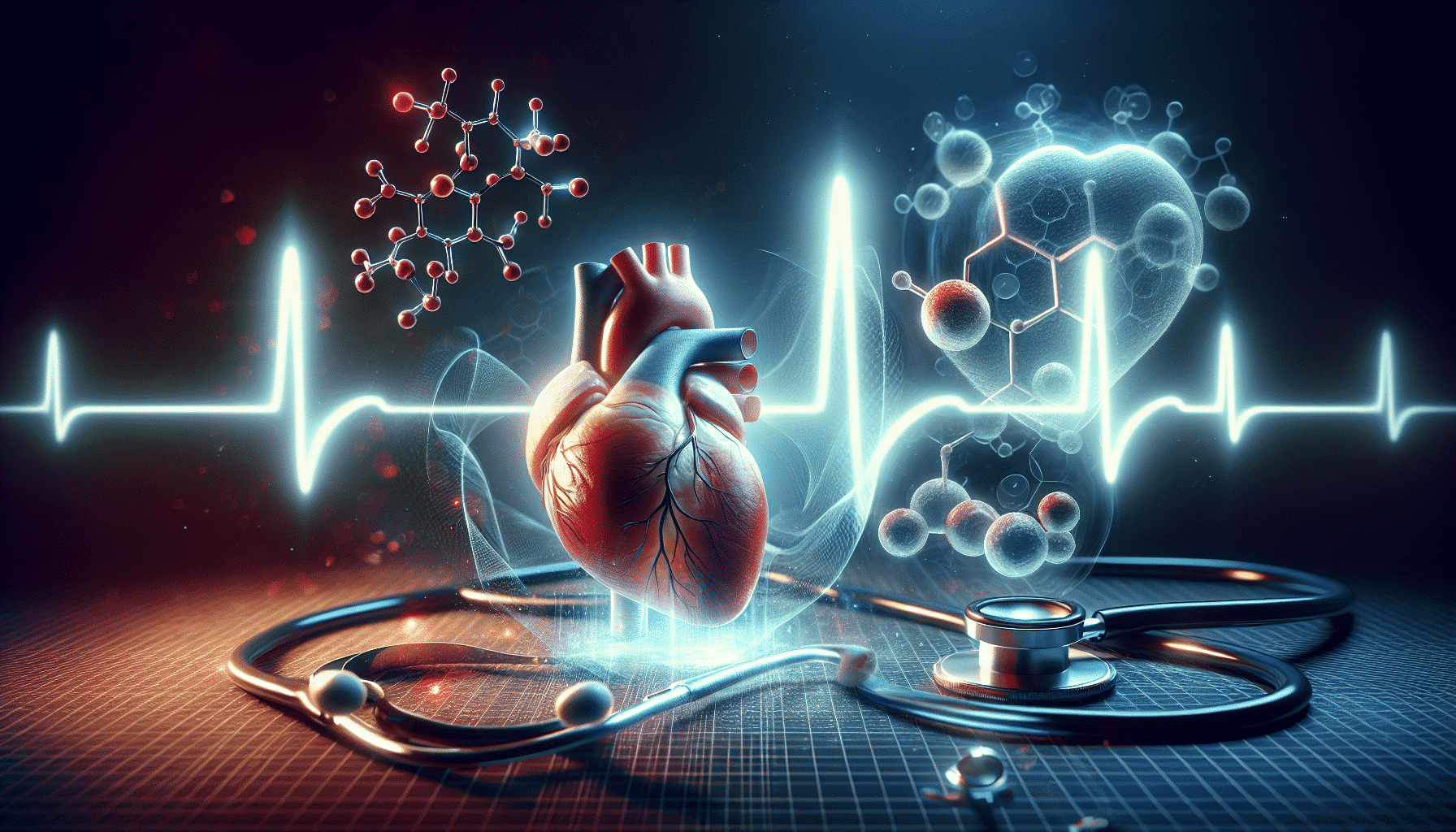
Digoxin, once a foxglove plant extract, now a commonly used medication, is potent in treating heart conditions like atrial fibrillation and heart failure. It is used to treat these conditions by reducing the strain on your heart, as well as reducing heart rate. However, it’s not without its risks for digoxin side effects.
From gastrointestinal issues to severe cardiac events, the range of possible side effects is as diverse as the individuals taking digoxin. Grasping the potential impact of these effects is key for their effective management.
How Digoxin Works for Atrial Fibrillation Patients
Digoxin operates by directly affecting the cardiac muscle cells, enhancing the force of heart contractions and moderating the overall heart rate. For patients with atrial fibrillation, a condition characterized by an irregular and often rapid heart rate, digoxin can be particularly beneficial.
In atrial fibrillation, the heart’s two upper chambers (the atria) beat chaotically and out of sync with the two lower chambers (the ventricles). This can lead to poor blood flow and potentially result in clot formation and stroke. Digoxin helps by slowing down the electrical conduction between the atria and ventricles, thus reducing the ventricular rate. This action allows the ventricles more time to fill with blood, leading to a more effective pump with each heartbeat.
Moreover, digoxin increases vagal (parasympathetic) activity, which is responsible for the inhibition of the electrical activity that controls the heartbeat. This results in a decrease in the heart rate, which is particularly useful in managing the rapid heart rate associated with atrial fibrillation.
By improving the efficiency of the heart and reducing symptoms like shortness of breath and fatigue, digoxin can significantly improve the quality of life for patients with atrial fibrillation. However, it is important to closely monitor digoxin levels to avoid toxicity, especially in patients with renal impairment, as they are more susceptible to elevated digoxin levels.
Common Digoxin Side Effects
Commonly, digoxin can cause the following side effects:
- Gastrointestinal side effects such as nausea and diarrhea, which affect more than 1 in 100 people
- General side effects such as fatigue and loss of appetite, making daily activities a bit more challenging
- Skin rashes, which are a common dermatological side effect
Serious Adverse Events
On the more serious end of the spectrum, an overdose of digoxin can lead to dangerous arrhythmias or malignant hyperkalemia. Irregular heartbeat and visual disturbances are also associated with serious adverse events. In fact, blurred vision or visual disturbances are common ocular side effects of this medication. Immediate medical help should be sought if serious side effects of digoxin occur.
Life-Threatening Digoxin Toxicity
While digoxin is a critical medication for many with heart conditions, it’s not without risks. Among the most severe hazards is life-threatening digoxin toxicity. This form of toxicity can manifest in several serious symptoms and requires immediate medical intervention.
Life-threatening digoxin toxicity is characterized by significant cardiac disturbances, such as ventricular arrhythmias, which are abnormal heart rhythms originating in the ventricles. These arrhythmias can be highly unstable and may lead to sudden cardiac arrest if not promptly treated. Additionally, high-grade heart blocks, which interfere with the heart’s electrical signals, can also occur, causing a dangerously slow heart rate and potentially leading to heart failure.
Other severe symptoms include symptomatic bradycardia (abnormally slow heart rate) and hypotension (low blood pressure), which can result in decreased blood flow to the body’s organs, including the brain, leading to fainting or even shock.
Patients experiencing signs of life-threatening digoxin toxicity may display a variety of symptoms including extreme fatigue, dizziness, loss of consciousness, or chest pain. Visual disturbances, such as seeing halos around lights, blurred vision, or changes in color perception, can also be indicative of severe toxicity.
In the event of suspected life-threatening digoxin toxicity, it is critical to seek emergency medical care immediately. Treatment may involve the administration of digoxin-specific antibody fragments (Digibind), which can quickly bind and neutralize digoxin, reducing its effects. Supportive care in an intensive care unit may also be necessary to stabilize the patient’s condition and monitor their cardiac function closely.
Prevention of such toxicity is key, and this is achieved through regular monitoring of serum digoxin levels, being vigilant about the signs and symptoms of toxicity, and managing any underlying kidney function issues that may affect the drug’s clearance from the body.
Long-Term Implications
Long-term use of digoxin can lead to electrolyte imbalances, particularly lowering potassium levels, which increases the risk of serious side effects. Individuals with hypothyroidism and seniors with kidney problems may become increasingly sensitive to digoxin over long-term use, potentially requiring a reduced dosage.
Hence, during extended digoxin treatment, close oversight of electrolyte levels, particularly magnesium and calcium, is mandatory to ward off unfavorable heart rhythm alterations.
Recognizing Signs of Digoxin Toxicity

Although digoxin can be lifesaving for many, keen awareness of the early signs of digoxin toxicity is of paramount importance. Symptoms such as confusion, nausea, dizziness and changes in heart rate could be early indicators of digoxin toxicity.
As patients with renal insufficiency are at an increased risk for digoxin toxicity, special attention is required to prevent toxicity due to reduced clearance in these patients. Early identification of these symptoms can avert severe complications and enhance the handling of this potent medication.
Early Indicators
Early warning signs of digoxin toxicity include confusion, loss of appetite, nausea, vomiting, and diarrhea. Cardiac-related early indicators are changes in heart rate or rhythm, such as becoming irregular or slow, as well as palpitations or fainting episodes.
Early detection of these signs can avert more serious complications if noticed on time, so it’s crucial to see a doctor immediately.
When to Seek Immediate Help
Some symptoms of digoxin toxicity warrant immediate medical attention. If you experience any of the following, seek immediate medical help:
- Severe gastrointestinal upset
- Changes in vision with yellow-green color perception
- Palpitations
- Difficulty breathing (dyspnea)
- Fainting (syncope)
Life-threatening digoxin toxicity, which includes ventricular arrhythmias, high-grade heart blocks, symptomatic slow heart rate (bradycardia), and low blood pressure (hypotension), requires urgent treatment. In such situations, patients should receive close monitoring in an intensive care unit.
Reversal of Digoxin Toxicity
In cases where severe digoxin toxicity occurs, the reversal agent Digibind, also known as digoxin immune fab, plays a crucial role. Digibind works by binding to the digoxin in the bloodstream, thereby neutralizing its effects and allowing it to be excreted from the body through the kidneys.
Digibind is specifically indicated when there is evidence of life-threatening toxicity, such as severe ventricular arrhythmias, hyperkalemia (high potassium levels), or when there is a significant overdose that leads to digoxin levels well above the therapeutic range. It’s also considered in cases where patients exhibit signs of severe digoxin intoxication, including extreme bradycardia (slow heart rate) or cardiac arrest.
The administration of Digibind can rapidly reduce the concentration of digoxin in the blood, alleviating the symptoms of toxicity. This treatment is particularly effective because it can quickly reverse the effects of digoxin, often within minutes to hours, depending on the severity of the toxicity and the amount of Digibind administered.
Healthcare professionals must carefully calculate the appropriate dose of Digibind, taking into account the total amount of digoxin ingested (if known) and the patient’s serum digoxin concentration. The quick action of Digibind can be lifesaving, making it an essential tool in the management of digoxin toxicity.
Patients treated with Digibind should be monitored closely for improvements in symptoms and signs of toxicity. Electrolyte levels and renal function should also be monitored post-administration, as restoring the body’s normal digoxin levels is important to ensure the patient’s heart function stabilizes.
Digibind is an effective antidote for digoxin toxicity, providing a rapid reversal of the potentially life-threatening effects of this powerful medication when used appropriately under medical supervision.
Drug Interactions with Digoxin

Taking digoxin doesn’t happen in a vacuum. It interacts with other medications, sometimes escalating the risk of adverse effects. For instance, it can interact with other medications affecting heart rhythm and blood pressure. Some medications that can increase digoxin levels and affect its metabolism include:
- Calcium channel blockers
- Macrolide antibiotics
- Antiarrhythmics like quinine
- Antifungal medications
- Proton pump inhibitors
- HIV medications
It’s important to be aware of these potential interactions when taking digoxin.
Hence, effective management of these drug interactions is paramount.
Common Drug Interactions
Common drug interactions with digoxin include nefazodone, spironolactone, and blood pressure medications, including specific classes like calcium channel blockers and beta blockers. These interactions can influence heart rhythm and blood pressure levels, necessitating regular blood tests to monitor digoxin levels to prevent adverse effects from these interactions.
How to Manage Interactions
Manage these interactions by informing your healthcare professional about all medications, vitamins, or herbs you’re currently taking. This allows them to manage all medications carefully and prevent possible interactions that could lead to elevated digoxin levels and exacerbation of side effects.
Special Considerations for Different Populations

For certain populations, special considerations are necessary when taking digoxin. People with preserved left ventricular systolic function, for instance, should avoid digoxin due to the heightened risk of side effects.
Understanding the unique needs and considerations of different populations is vital for safe and effective digoxin use.
Impact on Kidney Disease Patients
Patients with kidney disease may need a lower dosage of digoxin due to impaired clearance which can lead to dangerous levels of the drug accumulating. As the presence of kidney disease can alter the effectiveness of digoxin, correct dosage is crucial.
Elderly patients with kidney issues are more susceptible to digoxin side effects and might need lower doses and increased monitoring.
Breast Feeding and Pregnancy Concerns
For pregnant and breastfeeding women, cautious use of digoxin is advised, considering potential risks to the fetus and nursing infant. If you’re pregnant or breastfeeding, be sure to discuss this with your healthcare provider to ensure the safe use of digoxin.
Digoxin is excreted into breast milk in small amounts and is not expected to cause adverse effects in the nursing infant, but breastfeeding should be avoided for 2 hours after an intravenous dose of digoxin to minimize the amount of drug ingested by the infant.
Dosage and Administration Guidelines
Correct dosage and administration pave the way to effective treatment and minimized side effects with digoxin. Digoxin is available in oral tablet and oral solution forms and should be taken by mouth with or without food, usually once daily. It’s crucial to take digoxin tablets and oral solution at the same time each day to maintain an even level of the drug in the body.
For accurate dosing when administering the oral solution of digoxin, use the specially provided measuring device.
Loading Dose and Maintenance
How much digoxin should you take? That depends on your condition and renal function. Digoxin loading doses are required for maximal early benefits in the management of tachyarrhythmias which need quick control. Patients with atrial fibrillation or flutter are usually given more rapid loading doses for ventricular rate control compared to those treated for heart failure, who may not need a loading dose.
In patients with renal impairment, the half-life of digoxin is increased, necessitating adjustments in the frequency of maintenance dosing to avoid toxicity.
Missed Dose Protocols
Missed a dose? Don’t panic. Here’s what you should do:
- If it’s within 12 hours of the scheduled time when a dose of digoxin is missed, take it as soon as you remember.
- If the missed dose is remembered later than 12 hours from the scheduled time, it is advised to skip it and continue with the regular dosing schedule.
- If you miss doses of digoxin for two or more consecutive days, seek your doctor’s guidance on how to proceed.
Monitoring Your Health While on Digoxin

The crux of the issue? Consistent monitoring is vital for safe and effective digoxin treatment. Here are some key points to remember:
- Tests to measure digoxin serum levels should be drawn at least 6 to 8 hours after the last dose to ensure accuracy.
- Regular monitoring of plasma digoxin levels is crucial.
- Recommended serum levels should be between 0.8 to 2 ng/mL.
In addition, patients on digoxin require routine electrocardiograms and bloodwork to monitor renal function, electrolyte balance, and ecg based side effects of digoxin.
Regular Blood Tests and Doctor Visits
Frequent consultations with your healthcare provider are vital for effective digoxin management. Serum digoxin concentration should be checked one week after starting the medication and regularly afterward to ensure therapeutic levels are maintained. When initiating, adjusting, or discontinuing medications known to interact with digoxin, it’s recommended to monitor serum digoxin concentrations to prevent toxicity.
Should digoxin toxicity be suspected, an electrocardiogram (ECG), a basic metabolic panel, and digoxin levels need to be obtained upon arriving at a healthcare facility.
Recognizing Allergic Reactions
Like any medication, digoxin can trigger allergic reactions. Serious allergic reactions may manifest as:
- Rash
- Itching
- Swelling of the face, tongue, or throat
- Severe dizziness
- Trouble breathing
Although rare, these reactions can occur, and it’s important for patients to be aware and respond quickly by contacting their local poison control center.
Skin rashes, specifically of urticarial (hives) or scarlatiniform (resembling scarlet fever) character, may develop in some patients on long-term digoxin therapy. If you experience symptoms indicative of a serious allergic reaction to digoxin, seek medical help immediately. Symptoms may include:
- Itching
- Redness
- Swelling
- Difficulty breathing
Lifestyle Adjustments for Optimizing Treatment
Lifestyle adjustments can significantly influence the optimization of digoxin treatment. Some ways to make these adjustments include:
- Making dietary changes
- Incorporating exercise routines
- Practicing stress management techniques
- Seeking emotional support
These adjustments can all contribute to reducing the side effects associated with digoxin treatment.
Diet and Exercise Tips
Your plate and your physical activity level have a big role to play in managing heart conditions. Here are some tips for a heart-healthy diet:
- Prioritize consuming vegetables and fruits, whole grains, lean protein, and healthy fats.
- Choose whole grains over refined ones.
- Select heart-healthy fats to help improve blood cholesterol.
To prevent high blood pressure, reducing salt intake is vital, along with managing calorie intake through controlled portion sizes to avoid overeating. And remember, maintaining a balanced and enjoyable diet includes allowing occasional treats in moderation.
Managing Stress and Emotional Well-being
Managing stress and emotional well-being is just as important as diet and exercise in managing heart conditions, including chest pain. Strong emotional and social support leads to better management of heart conditions, including those on digoxin, and a more positive life outlook. Support from spouses, partners, or healthcare providers is critical across various aspects of life with heart failure, and it’s essential to treat heart failure effectively.
A wider social network, including friends and family, can provide different perspectives and emotional support, alleviating the burden on a single caregiver or partner. AFib support groups are a venue for patients to share experiences and feelings with peers, which may be beneficial for some but may not appeal to every patient.
Summary
Navigating the world of digoxin side effects and interactions might seem challenging, but with the right knowledge and strategies, it’s manageable. Understanding the side effects, recognizing signs of toxicity, managing drug interactions, and making necessary lifestyle adjustments are all part of the journey. Remember, you’re not alone in this. With the support of healthcare professionals and loved ones, you can effectively manage your condition and lead a fulfilling life.
Frequently Asked Questions
What is the most serious adverse effect of digoxin?
The most serious adverse effect of digoxin is digoxin toxicity, which can cause symptoms such as confusion, loss of appetite, nausea, vomiting, diarrhea, changes in vision, fatigue, and irregular heartbeat. In rare cases, a serious allergic reaction can occur, leading to symptoms like rash, severe itching/swelling, dizziness, and trouble breathing.
How does digoxin affect the heart?
Digoxin helps the heart beat stronger, making it easier for the heart to pump blood throughout the body. It also slows down the heart rate and improves blood filling in the heart’s chambers.
What precautions should be taken when taking digoxin?
When taking digoxin, it’s important to be aware of potential side effects such as nausea, vomiting, diarrhea, and vision problems, and to consult your healthcare provider before your next dose if you experience these symptoms. Additionally, inform your doctor about any allergies and medications you are currently taking, as well as closely following your doctor’s directions to avoid potential overdose effects.
What are 5 signs of digoxin toxicity?
If you experience symptoms like loss of appetite, nausea, vomiting, changes in vision, confusion, or irregular pulse, it could indicate digoxin toxicity and requires immediate medical attention. Additionally, fast heartbeat and vision changes such as seeing spots or blurred vision are also common signs of digoxin toxicity.
What is the most common side effect of digoxin?
The most common side effects of digoxin are nausea, vomiting, diarrhea, and loss of appetite. It’s important to report any worsening or persistent side effects to your doctor promptly.
The Best Atrial Fibrillation Book
Your Complete Guide To AFib: The Essential Manual For Every Patient With Atrial Fibrillation

Shop AFib Products on Amazon
KardiaMobile 6-Lead Personal EKG Monitor – Six Views of The Heart – Detects AFib and Irregular Arrhythmias – Instant Results in 30 Seconds – Works with Most Smartphones - FSA/HSA Eligible
13% Off
KardiaMobile 1-Lead Personal EKG Monitor – Record EKGs at Home – Detects AFib and Irregular Arrhythmias – Instant Results in 30 Seconds – Easy to Use – Works with Most Smartphones - FSA/HSA Eligible
$79.00 (as of June 16, 2025 15:14 GMT -06:00 - More infoProduct prices and availability are accurate as of the date/time indicated and are subject to change. Any price and availability information displayed on [relevant Amazon Site(s), as applicable] at the time of purchase will apply to the purchase of this product.)
Apple Watch Series 9 [GPS 41mm] Smartwatch with Storm Blue Aluminum Case with Silver Sport Band M/L. Fitness Tracker, Blood Oxygen & ECG Apps, Always-On Retina Display
(as of June 16, 2025 08:46 GMT -06:00 - More infoProduct prices and availability are accurate as of the date/time indicated and are subject to change. Any price and availability information displayed on [relevant Amazon Site(s), as applicable] at the time of purchase will apply to the purchase of this product.)
Fitbit Sense 2 Advanced Health and Fitness Smartwatch with Tools to Manage Stress and Sleep, ECG App, SpO2, 24/7 Heart Rate and GPS, Shadow Grey/Graphite, One Size (S & L Bands Included)
10% Off
OMRON 2-in-1 Upper Arm Blood Pressure Monitor & 1-Lead EKG Monitor - Clinically Validated Blood Pressure Arm Cuff & Machine - Use OMRON Connect App
24% Off
Samsung Galaxy Watch 6 44mm Bluetooth Smartwatch, Fitness Tracker, Personalized HR Zones, Advanced Sleep Coaching, Heart Monitor, BIA Sensor, Health Wellness Insights, Big Screen, US Version, Graphite
$353.21 (as of June 16, 2025 20:35 GMT -06:00 - More infoProduct prices and availability are accurate as of the date/time indicated and are subject to change. Any price and availability information displayed on [relevant Amazon Site(s), as applicable] at the time of purchase will apply to the purchase of this product.)
Natural Rhythm Triple Calm Magnesium 150 mg - 120 Capsules – Magnesium Complex Compound Supplement with Magnesium Glycinate, Malate, and Taurate. Calming Blend for Promoting Rest and Relaxation.
$20.77 ($0.17 / Count) (as of June 16, 2025 18:03 GMT -06:00 - More infoProduct prices and availability are accurate as of the date/time indicated and are subject to change. Any price and availability information displayed on [relevant Amazon Site(s), as applicable] at the time of purchase will apply to the purchase of this product.)
Pure Encapsulations Magnesium (Glycinate) - Supplement to Support Stress Relief, Sleep, Heart Health, Nerves, Muscles, and Metabolism* - with Magnesium Glycinate - 180 Capsules
$44.60 ($0.25 / Count) (as of June 16, 2025 08:46 GMT -06:00 - More infoProduct prices and availability are accurate as of the date/time indicated and are subject to change. Any price and availability information displayed on [relevant Amazon Site(s), as applicable] at the time of purchase will apply to the purchase of this product.)
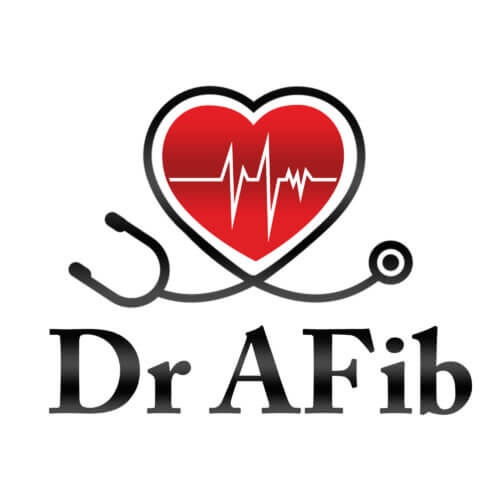














![Apple Watch Series 9 [GPS 41mm] Smartwatch with Storm Blue Aluminum Case with Silver Sport Band M/L. Fitness Tracker, Blood Oxygen & ECG Apps, Always-On Retina Display #1](https://m.media-amazon.com/images/I/311xwtp4mFL._SL100_.jpg)
![Apple Watch Series 9 [GPS 41mm] Smartwatch with Storm Blue Aluminum Case with Silver Sport Band M/L. Fitness Tracker, Blood Oxygen & ECG Apps, Always-On Retina Display #2](https://m.media-amazon.com/images/I/41j+8AaUGsL._SL100_.jpg)
![Apple Watch Series 9 [GPS 41mm] Smartwatch with Storm Blue Aluminum Case with Silver Sport Band M/L. Fitness Tracker, Blood Oxygen & ECG Apps, Always-On Retina Display #3](https://m.media-amazon.com/images/I/41jIyxZitnL._SL100_.jpg)
![Apple Watch Series 9 [GPS 41mm] Smartwatch with Storm Blue Aluminum Case with Silver Sport Band M/L. Fitness Tracker, Blood Oxygen & ECG Apps, Always-On Retina Display #4](https://m.media-amazon.com/images/I/41IpNJERjCL._SL100_.jpg)
![Apple Watch Series 9 [GPS 41mm] Smartwatch with Storm Blue Aluminum Case with Silver Sport Band M/L. Fitness Tracker, Blood Oxygen & ECG Apps, Always-On Retina Display #5](https://m.media-amazon.com/images/I/31o17yhfYpL._SL100_.jpg)






























